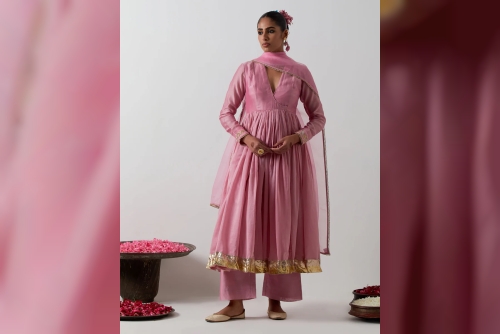The Jagannath Rath Yatra, also known as the “Jagannath puri Yatra”, is one of the biggest and most significant festivals of India. This great festival is celebrated every year in Puri, Odisha and this grand event is used to pay glory to Lord Jagannath, a form of Lord Vishnu, his older brother Balabhadra, and his sister Subhadra. The Rath Yatra of Puri 2025 is one of the most celebrated events, and this article will provide you with all the information about this festival.
What is Rath Yatra?
Rath Yatra is a ceremonial procession of the deities from the Jagannath Temple to the Gundicha Temple, which is supposedly the place of their aunt. The deities travel in three gigantic, beautifully carved, wooden chariots known as raths, which are dragged by thousands of devotees. This practice of dragging the chariots is very divine and is said to bring positive results. The literature such as the Skanda Purana also establishes this journey as the greatest of the twelve annual journeys of Lord Jagannath. It is said that one who gets a chance to watch the deities on the chariots during this journey will have his/her sins forgiven and will receive blessings.
The Meaning of The Rath Yatra
The Jagannath Temple to Gundicha Temple to Jagannath Temple procession is not just a pageant; it is a ritual. It signifies:
• Lord Jagannath’s journey to his place of birth: The Gundicha Temple is considered his birthplace and the place of his aunt.
• A festival of cleansing and restoration: The pulling of the chariots is thought to cleanse the soul and produce spiritual wealth.
• A festival of oneness: It is a festival through which people from all classes of society become one unit. The King of Puri himself performs the Chhera Panhara ritual (sweeping the chariots), which means that everyone is equal in front of God.
Why is Rath Yatra Celebrated?
The Jagannath Rath Yatra is connected to the Hindu mythology and represents several ideas:
• It is the annual festival when Lord Jagannath is believed to visit his place of birth, Mathura (the Gundicha Temple is shown as a symbol of it).
• It is said that Rath Yatra is also the symbolic journey of Lord Jagannath from the temple (the heavens) to the streets (the earthly world) to meet His devotees.
• It is a festival of life journey and the search for liberation of the soul.
• It is the celebration of equality and unity, everyone has an equal right to participate in the festival regardless of caste or background.
Rath Yatra 2025 Dates and Key Rituals
The Rath Yatra 2025 is celebrated over several days and is accompanied by several important rituals, each of which is marked by a unique day:
Akshya Tritiya (April 30, 2025): This ritual is the formal start of the Rath Yatra preparations. It is on the auspicious day of Akshaya Tritiya that the construction of the chariots for the grand Rath Yatra festival in Puri is started. On this day, it is traditional to bring the first logs of wood to start making the enormous chariots for Lord Jagannath, Balabhadra and Subhadra.
Snana Purnima (June 11, 2025): On this day, the deities are taken out from the temple and are given a ceremonial bath with 108 pots of holy water which are fetched from the Golden Well. In this event, the devotees can witness the deities. After the bath, the deities are put on some special costume called ‘Gaja Besha’, i.e. they dress up like elephants.
Anavasara (June 13 – 26, 2025): After Snana Purnima, the deities are placed in isolation for 15 days. It is said that they ‘catch cold’ after the bath and need to be taken care of and made to rest. This period is also a time when the temple is closed to the public and when special herbal treatments are provided to the deities.
Gundicha Marjana (June 26, 2025): On the day before the actual Rath Yatra, the Gundicha Temple is cleaned up and readied for the deities to occupy. This ritual is the way of cleansing the heart to receive the divine.
Rath Yatra (June 27, 2025): The main event! The deities are taken out in a big procession (Pahandi) and put on their chariots. Then, the grand procession begins. The chariots are pulled by thousands of devotees along the Bada Danda, or the Grand Road, to the Gundicha Temple, which is approximately three kilometers. This act of pulling the chariots is said to erase sin and bring blessings. When the deities are on their chariots, the King of Puri performs the ‘Chhera Panhara’ ritual, in which he sweeps the chariot platforms with a golden broom. This means that God has no prejudice against anyone.
Hera Panchami (July 1, 2025): On the fifth day of the deities stay at Gundicha Temple, people believe that Goddess Lakshmi, the consort of Lord Jagannath, visits him. Hera Panchami is the tradition of Goddess Lakshmi’s search for her husband and a playful game between the representatives of the deities.
Sandhya Darshan (July 3, 2025): It is believed that the viewing of the deities at the Gundicha Temple in the evening is of supreme importance. According to the literature, it is as if one has seen the deities for ten years at the main temple if one has seen them at this temple.
Bahuda Yatra (July 5, 2025): The festival of carrying the deities from the Gundicha Temple to the Jagannath Temple is known as Bahuda Yatra. The chariots are also stopped at the Mausi Maa Temple when they are on their way back and they receive ‘Poda Pitha,’ a kind of baked cake.
Suna Besha (July 6, 2025): The day after the festival of Bahuda Yatra, the deities are decorated with golden ornaments during the festival of Suna Besha. This is a magnificent scene, with the deities covered in gold.
Adhara Pana (July 7, 2025): Adhara Pana is a kind of sweet drink which is especially offered to Jagannath, Balabhadra and Subhadra deities on their chariots during Rath Yatra. The drink, which is prepared from milk, cheese, sugar and spices, is prepared in large earthen pots and then served to the deities. After serving the drink, the pots are broken, meaning that everything is for everyone. This is an act of gratitude towards the deities and also the act of cutting the ego and egoistic attachments.
Niladri Bijay (July 8, 2025): This is the last event, which is the installation of the deities in the Jagannath Temple sanctum sanctorum. This is a final event of the festival, which means that the deities have returned to their proper place in the temple.
The Magnificent Chariots
The construction of the chariots is a very slow process that starts months before the festival. The chariots are made of specific type of wood and are coloured and designed beautifully. The chariot of Lord Jagannath, Nandighosa, is the biggest, and Balabhadra’s Taladhwaja and Subhadra’s Darpadalana are smaller. Each chariot has different set of wheels, colours and decorations which are different from the other and these represent the unique identities of the deities.
Planning Your Visit for Rath Yatra 2025
If you intend to be part of the Rath Yatra 2025, it is advisable to make your travel and lodging arrangements in advance because during this time Puri is packed with people. Since it is during the hot and humid season, find out the weather conditions. Expect a large number of people and comply with the directives of the local authorities.
The Jagannathpuri Yatra is one of those experiences that will stay with you for a lifetime and give you a perfect glimpse of cultural and religious India. Yet another spectacular celebration it promises to be for the Rath Yatra 2025.












